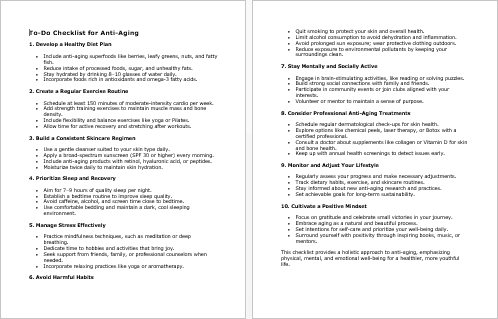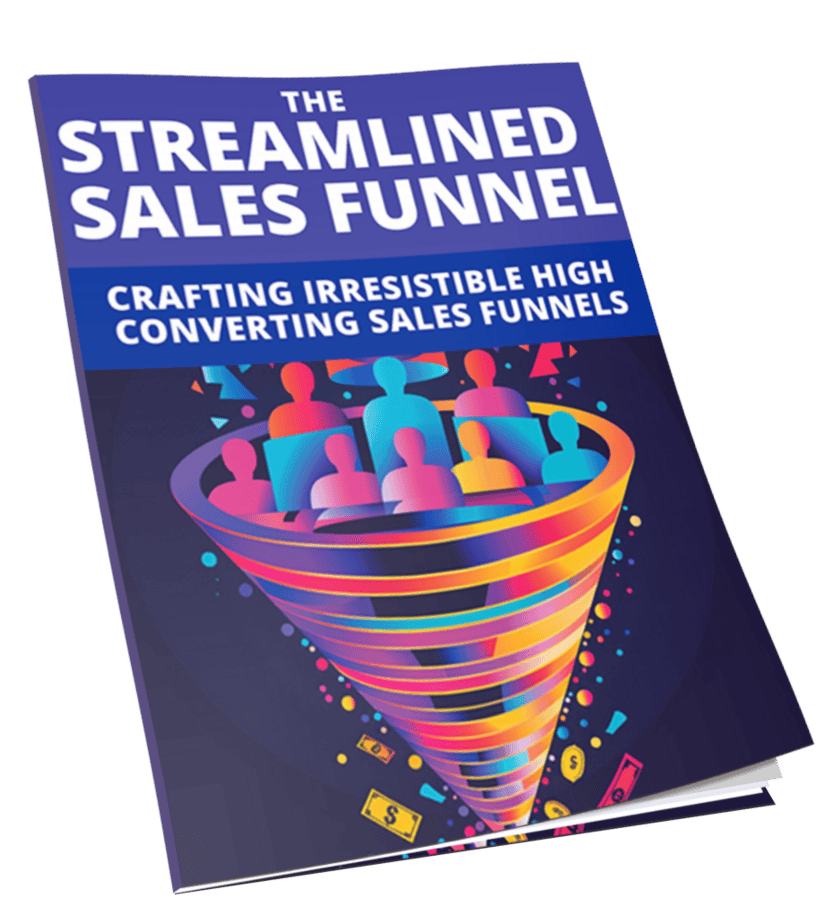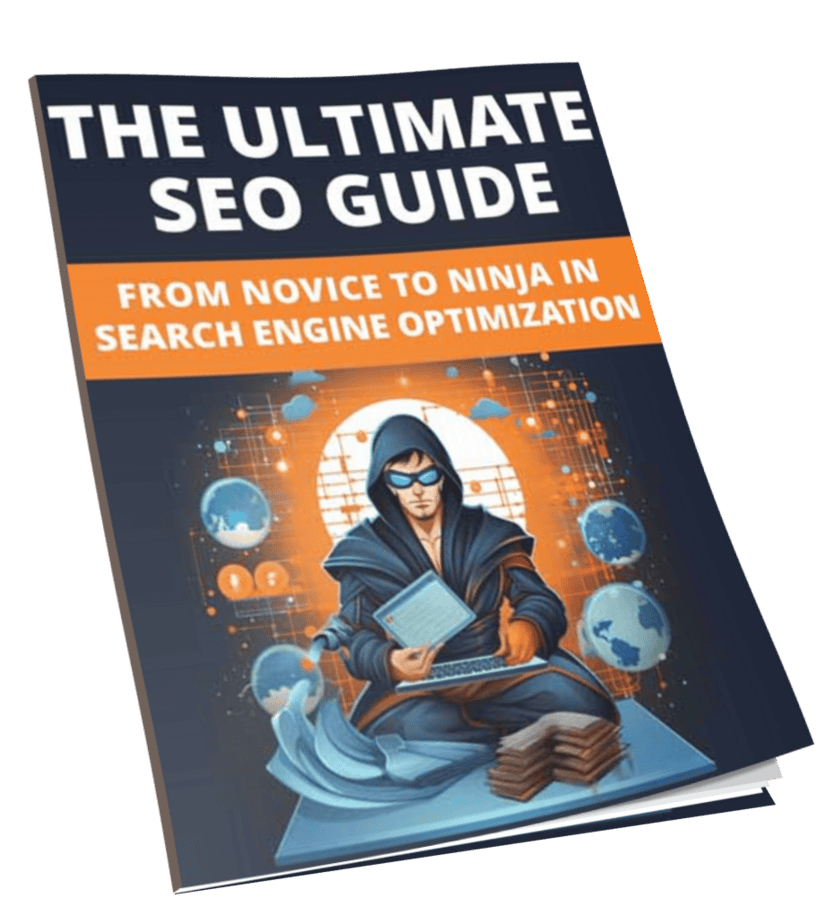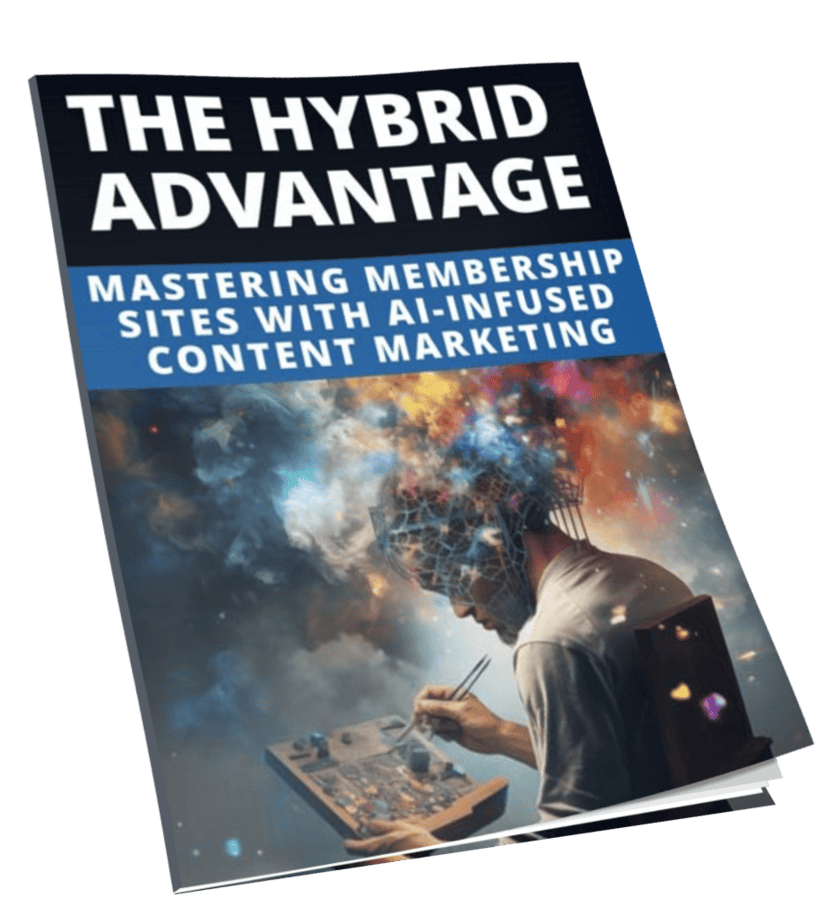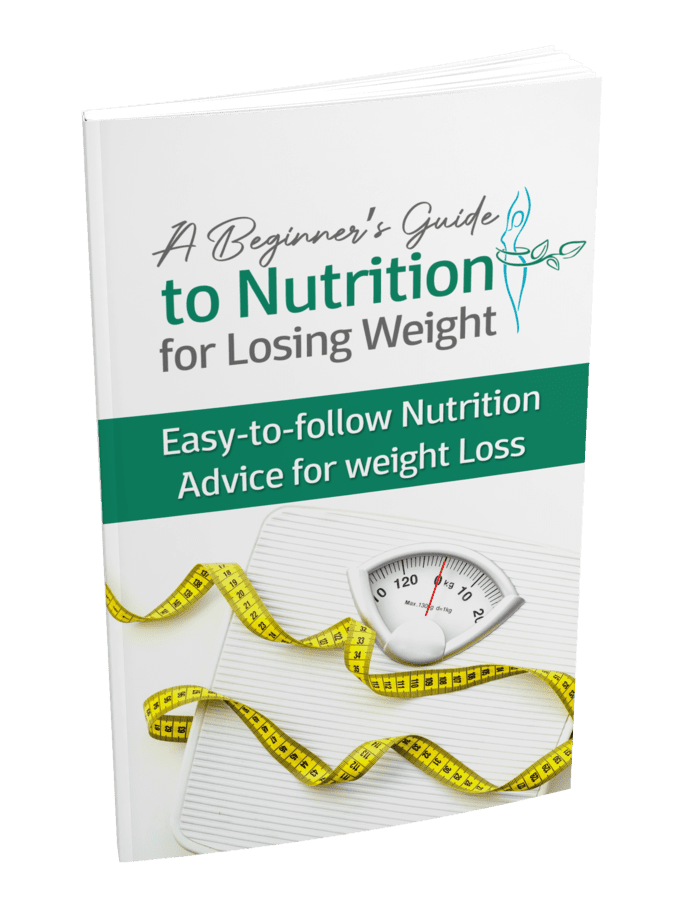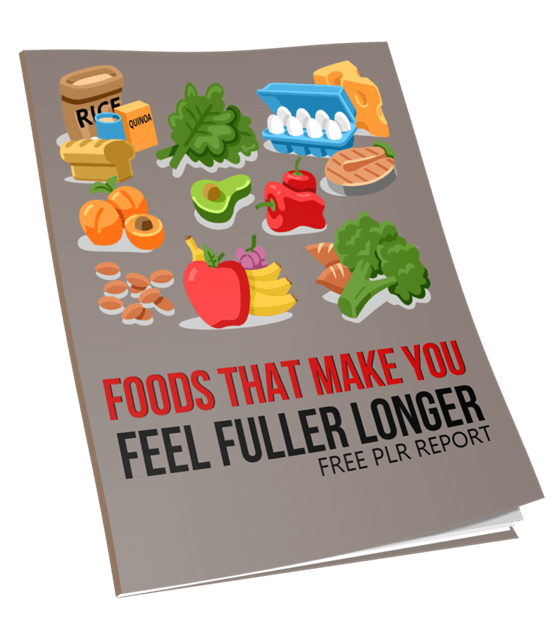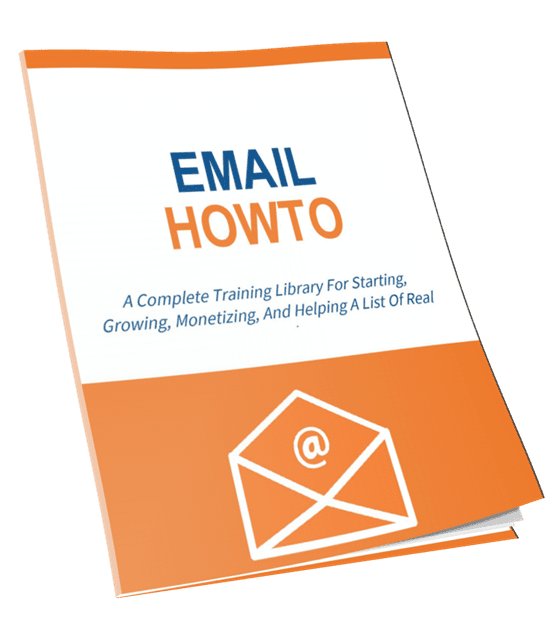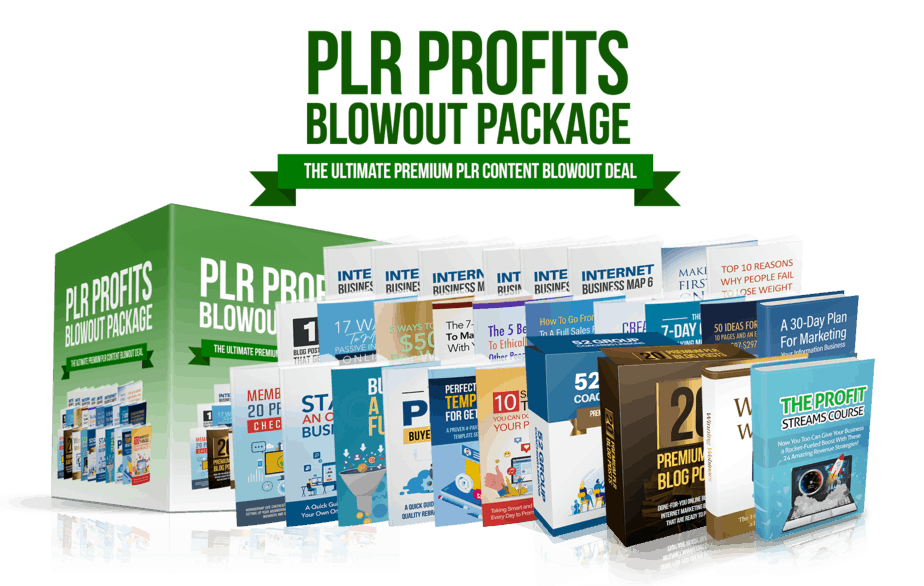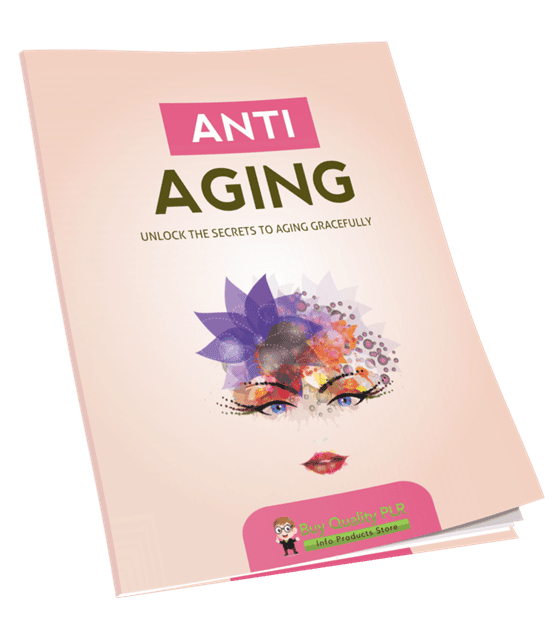
Anti Aging PLR Course 27k Words
in Anti Aging PLR , Anti Aging PLR eBooks , Health PLR , Health PLR eBooks , PLR Checklists , PLR eBooks , PLR eCourses , Premium PLR , Premium PLR eBooks , Premium PLR Reports , Premium White Label Brandable PLR Coaching Courses , Private Label Rights ProductsChoose Your Desired Option(s)
has been added to your cart!
have been added to your cart!
#antiaging #plrcourse #antiagingcontent #contentcreation #beautyandwellness #aginggracefully #healthandbeauty
Unlock the Secrets to Aging Gracefully with the Anti-Aging PLR Course
Aging is inevitable—but how you age is up to you. The Anti-Aging PLR Course is your ultimate guide to looking and feeling your best at any stage of life. Whether you’re creating content for your audience, starting a new business, or just seeking to improve your own well-being, this course is packed with actionable strategies to help you embrace a vibrant, youthful lifestyle.
Presenting…
Anti Aging PLR Course 27k Words
What’s Inside the Anti-Aging PLR Course?
Module 1: Understanding the Science of Aging
- What is Aging?
Dive into the biology of aging and how it affects your body and mind. - Genetics vs. Lifestyle
Discover how your daily habits can help you defy genetic predispositions. - Debunking Myths
Learn the truth behind common aging misconceptions. - The Power of Positivity
Explore how a positive outlook can significantly impact your overall health and vitality.
Module 2: Nutrition for Anti-Aging
- Superfoods That Work Wonders
Learn which nutrient-packed foods promote radiant skin, strong bones, and high energy. - Hydration Secrets
Understand why water is your best friend for glowing skin and healthy cells. - Avoiding Harmful Foods
Identify the foods that speed up aging and discover delicious, healthier swaps. - Meal Planning Made Simple
Create sustainable, balanced meal plans that cater to your anti-aging goals.
Module 3: Fitness and Mobility for Longevity
- Movement for a Younger You
Explore the importance of daily movement in slowing the signs of aging. - The Best Workouts for Anti-Aging
Learn how strength training, yoga, and cardio can keep you active and vibrant. - Building Sustainable Routines
Create a workout plan that fits your lifestyle and goals. - The Importance of Recovery
Discover why rest and recovery are just as essential as exercise.
Module 4: Skincare and Beauty Essentials
- Understanding Your Skin
Learn how your skin evolves over time and how to care for it at every stage. - Anti-Aging Skincare Routines
Build a simple yet effective skincare regimen with proven products. - DIY Natural Remedies
Explore easy, affordable remedies you can make at home to refresh and rejuvenate your skin. - Professional Treatments Explained
Get insights into facials, peels, and minimally invasive procedures to boost your confidence.
Module 5: Lifestyle Habits for Vibrant Aging
- Sleep Your Way to Youthfulness
Discover how quality sleep revitalizes your body and mind. - Stress Management Techniques
Master relaxation methods like mindfulness, meditation, and breathing exercises. - The Power of Connection
Explore how social engagement and meaningful relationships enhance your well-being. - Creating a Long-Term Plan
Combine everything you’ve learned into a personalized, sustainable anti-aging action plan.
Why This Course is a Game-Changer
- Comprehensive and Practical: Covers everything from nutrition to skincare, fitness, and emotional well-being.
- Customizable Content: Perfect for bloggers, coaches, and business owners to rebrand and resell.
- Easy-to-Implement Tips: Actionable strategies you can start using today.
- Expertly Researched: Backed by science, this course simplifies complex concepts into easy-to-understand steps.
What’s Included in the Anti-Aging PLR Package?
Course Content: 25,501 words of step-by-step guidance for living a vibrant, youthful life.
- Checklist: A simple guide to help users stay on track as they implement each module.
- FAQs Document: Address common questions about anti-aging and clear up misconceptions.
- Sales Page Template: A ready-to-use high-converting sales page (like this one!) to start selling immediately.
How You Can Use and Profit from This PLR Course
- Sell It as Your Own Course:
Rebrand and offer this course as a premium product for $47–$97. - Build a Membership Site:
Create an exclusive anti-aging resource hub and charge monthly membership fees. - Break It Down into Mini Products:
Turn individual modules into standalone eBooks, guides, or webinars for $10–$20 each. - Leverage It as a Lead Magnet:
Use sections of the course to attract new subscribers and grow your email list. - Add Value to Your Coaching Program:
Integrate this content into your existing wellness or fitness coaching services. - Create a Video or Audio Series:
Turn the content into an engaging multimedia course that sells for $297 or more.
Who Is This Course For?
- Wellness and Fitness Coaches: Help your clients achieve their anti-aging goals with practical tips.
- Bloggers and Content Creators: Use the content to attract, educate, and monetize your audience.
- Health Enthusiasts: Learn effective ways to feel younger and live healthier.
- Entrepreneurs: Create a profitable business in the evergreen wellness niche.
Special Introductory Price: Only $14.99
Take advantage of this exclusive opportunity to own a high-quality PLR product at an unbeatable price. With the growing demand for anti-aging solutions, this course is your chance to tap into a lucrative market.
Ready to Embrace a Healthier, More Vibrant Future?
Click the button below to grab your copy of the Anti-Aging PLR Course and start transforming lives today!
has been added to your cart!
have been added to your cart!
Here A Sample of Anti Aging PLR Course
Aging is a natural part of life, but embracing healthy habits can help you feel and look your best at any age. This course will empower you with actionable strategies to maintain vitality, promote healthy aging, and live your life to the fullest.
Module 1: Understanding the Science of Aging
Step 1: What is Aging?
Aging is a universal process that affects every living organism, including humans. By understanding what happens to the body and mind as we age, we can make informed decisions to maintain our vitality and health. In this step, we’ll explore the biological, physical, and mental aspects of aging, offering a detailed view of how the process unfolds.
1. Biological Perspective: Aging at the Cellular Level
Aging begins at the most fundamental level—our cells.
- Cellular Damage: Over time, our cells experience wear and tear due to environmental factors like UV radiation, pollution, and oxidative stress. This damage accumulates and impacts cell function.
- Telomeres: At the ends of our chromosomes are structures called telomeres. These act like protective caps, but they shorten each time a cell divides. Shortened telomeres are linked to aging and age-related diseases.
- Mitochondrial Decline: Known as the powerhouse of the cell, mitochondria provide energy. As we age, their efficiency decreases, leading to lower energy levels and slower cell repair mechanisms.
- Impact of Genetics: Some aspects of aging are genetically programmed. For instance, your family history may influence how quickly your skin wrinkles or how prone you are to certain age-related illnesses.
2. Physical Changes: The Visible and Invisible Signs
As we age, changes become apparent in our bodies.
- Skin: Reduced collagen and elastin production leads to thinner, less elastic skin, causing wrinkles and sagging. Age spots may also appear due to years of sun exposure.
- Muscles and Bones: Muscle mass gradually decreases (a process called sarcopenia), and bone density reduces, increasing the risk of fractures and osteoporosis.
- Cardiovascular System: Arteries can stiffen, and the heart may work harder to pump blood, leading to higher blood pressure and an increased risk of cardiovascular disease.
- Metabolism: A slower metabolism often leads to weight gain and less efficient nutrient absorption.
- Sensory Decline: Vision, hearing, taste, and smell may weaken due to changes in sensory organs.
3. Mental and Cognitive Changes: Aging and the Brain
The brain, like the rest of the body, undergoes aging.
- Cognitive Decline: Memory, problem-solving skills, and processing speed may slow with age. While mild forgetfulness is normal, significant changes may signal conditions like dementia.
- Neuroplasticity: The brain retains some ability to adapt and reorganize itself, even in later years. Lifelong learning and mental challenges can help maintain brain health.
- Mental Health: Emotional changes such as increased anxiety, loneliness, or depression can occur, particularly in individuals who face significant life changes like retirement or loss of loved ones.
- Sleep Patterns: Aging often affects sleep quality, leading to less restorative rest, which can impact cognitive and physical health.
4. Lifestyle Impacts on Aging: The Role of Choices
While genetics play a role in aging, lifestyle choices significantly influence how we age.
- Diet: A nutrient-rich diet with antioxidants, healthy fats, and lean proteins can slow the aging process by reducing inflammation and oxidative stress.
- Exercise: Regular physical activity maintains muscle mass, improves cardiovascular health, and supports mental well-being.
- Stress Management: Chronic stress accelerates aging by increasing cortisol levels, which can weaken the immune system and damage cells. Practices like mindfulness and yoga help mitigate these effects.
- Environmental Exposures: Pollution, smoking, and prolonged sun exposure can hasten aging by damaging cells and skin.
- Social Connections: Maintaining strong relationships and engaging in social activities positively impacts mental and emotional health, promoting longevity.
Key Takeaways for International Course Creators
When teaching the science of aging, use diverse examples to ensure cultural relevance. Consider these instructional strategies:
- Include visual aids, such as diagrams of cellular changes and photos illustrating physical aging.
- Use clear language to explain complex biological processes, avoiding overly technical terms.
- Relate content to practical scenarios, like how diet in different countries can influence aging.
- Encourage discussions on how cultural perspectives shape attitudes toward aging.
Understanding aging is the foundation for making healthier, more informed choices that empower learners to age gracefully and confidently.
Step 2: The Role of Genetics vs. Lifestyle
Aging is influenced by two main factors: genetics and lifestyle. While we inherit certain predispositions from our family, the choices we make every day play a significant role in how we age. This step explores the intricate balance between what is hardwired into our DNA and how our habits and environment shape our health and longevity.
1. The Role of Genetics in Aging: What We Inherit
Genetics set the foundation for how our bodies respond to aging.
- Inherited Traits: Genes determine many physical characteristics, including skin elasticity, hair graying, and the risk of certain age-related diseases like diabetes, heart disease, and Alzheimer’s. For example, if your parents had early wrinkles or a predisposition to arthritis, you might inherit those tendencies.
- Longevity Genes: Certain families carry genes associated with longer lifespans, such as efficient DNA repair mechanisms or resistance to oxidative stress. However, only a small percentage of longevity is purely genetic—estimated to be around 20-30%.
- Epigenetics: This emerging field studies how environmental factors and lifestyle choices can “turn on” or “turn off” certain genes. For instance, smoking or chronic stress can activate genes linked to disease, while a healthy diet might suppress them.
- Genetic Testing: Modern genetic testing allows individuals to identify predispositions to conditions like high cholesterol or osteoporosis, offering opportunities to mitigate risks through lifestyle adjustments.
2. Lifestyle: The Power of Daily Choices
Lifestyle choices account for the majority of the aging process—around 70-80% according to research.
- Diet: A balanced diet rich in antioxidants, healthy fats, and whole grains can slow cellular aging. Conversely, diets high in sugar and processed foods may accelerate aging through inflammation.
- Exercise: Regular physical activity promotes healthy aging by maintaining muscle mass, improving cardiovascular health, and enhancing mood. Sedentary lifestyles are linked to quicker physical and mental decline.
- Sleep: Quality sleep is critical for cellular repair, hormone regulation, and brain health. Poor sleep accelerates aging markers, including wrinkles and memory loss.
- Stress Management: Chronic stress increases cortisol levels, which damages cells, suppresses the immune system, and accelerates aging. Mindfulness practices, yoga, and relaxation techniques can counteract these effects.
- Environmental Factors: Exposure to pollution, UV radiation, and harmful chemicals contributes to aging. Simple choices like wearing sunscreen, avoiding smoking, and using air purifiers can protect your body.
3. Balancing Genetics and Lifestyle: Practical Insights
While genetics provide a blueprint, lifestyle choices can often modify or override genetic predispositions.
- Risk Mitigation: If you have a family history of heart disease, lifestyle changes like a heart-healthy diet, regular exercise, and stress management can significantly reduce your risk.
- Holistic Approach: Lifestyle improvements—such as quitting smoking or adopting a Mediterranean diet—have been shown to improve health outcomes, even in individuals with a genetic predisposition to illness.
- Preventive Care: Regular check-ups and screenings tailored to your genetic risk factors can catch issues early. For example, individuals with a family history of osteoporosis should prioritize bone density tests and calcium-rich diets.
- Epigenetic Influence: Adopting positive habits like meditation, exercise, and good nutrition can positively influence how your genes are expressed, delaying or preventing the onset of genetic predispositions.
4. Cultural and Global Contexts in Aging
The balance of genetics and lifestyle can vary greatly based on cultural and environmental factors.
- Blue Zones: Regions like Okinawa (Japan) and Sardinia (Italy) demonstrate how lifestyle choices—such as diet, community, and activity—can lead to longer, healthier lives despite varying genetic backgrounds.
- Dietary Traditions: In some cultures, traditional diets (e.g., the Mediterranean or plant-based diets) naturally include anti-aging nutrients, while others may rely heavily on processed foods, impacting overall health.
- Access to Resources: Genetics may play a larger role in aging outcomes in regions where individuals have limited access to healthcare, healthy food, or fitness facilities.
- Social Connections: Globally, cultures that emphasize social bonds and community tend to have healthier aging populations, showing the power of environment and relationships over genetic predisposition.
Key Takeaways for International Course Creators
- Simplify Complex Science: Use clear explanations and avoid jargon when discussing genetics and epigenetics. Provide visuals like family trees or diagrams to illustrate genetic influence.
- Offer Actionable Insights: Highlight how learners can take control of their health through specific lifestyle changes, regardless of genetic predispositions.
- Adapt to Cultural Contexts: Use examples and case studies that resonate with international audiences, reflecting diverse diets, traditions, and environmental challenges.
- Encourage Empowerment: Emphasize that while genetics play a role, the power of lifestyle choices offers a significant opportunity for healthier, more vibrant aging.
By understanding the interplay of genetics and lifestyle, learners can take proactive steps to optimize their health, extend their lifespan, and enjoy their aging journey.
Step 3: Common Myths About Aging
Aging is a natural process, yet it is surrounded by myths and misconceptions that can create unnecessary fear, limit potential, or lead to unhealthy habits. In this step, we’ll uncover and debunk some of the most common myths about aging, replacing them with evidence-based facts. This knowledge empowers individuals to approach aging with confidence, positivity, and informed choices.
1. Myth 1: “Aging is Irreversible—Nothing Can Be Done”
- The Myth: Many believe that aging is an unstoppable decline with no room for improvement. Once signs of aging appear, they think it’s too late to make a difference.
- The Fact: While we cannot completely stop the aging process, we can significantly slow it down and even reverse certain effects. Scientific advancements in nutrition, exercise, and medical care prove that aging is malleable.
- Cellular Repair: Practices like eating antioxidant-rich foods and reducing stress can help repair cellular damage.
- Muscle and Bone Health: Weight-bearing exercises can rebuild lost muscle mass and improve bone density, even in later years.
- Skin Health: Regular hydration, proper skincare routines, and treatments like retinoids can restore skin elasticity and reduce wrinkles.
- Cellular Repair: Practices like eating antioxidant-rich foods and reducing stress can help repair cellular damage.
2. Myth 2: “Mental Decline is Inevitable with Aging”
- The Myth: People often assume that everyone will experience significant memory loss or cognitive impairment as they age. This leads to unnecessary worry and stigma around older adults.
- The Fact: While some cognitive decline is normal, severe issues like dementia are not inevitable.
- Neuroplasticity: The brain retains the ability to adapt and grow through learning and new experiences. Activities like reading, solving puzzles, or learning a new language can keep the mind sharp.
- Healthy Habits: Regular exercise, proper sleep, and a balanced diet rich in omega-3 fatty acids and antioxidants support brain health.
- Stress and Mental Health: Reducing stress and maintaining social connections can significantly delay or prevent cognitive decline.
- Neuroplasticity: The brain retains the ability to adapt and grow through learning and new experiences. Activities like reading, solving puzzles, or learning a new language can keep the mind sharp.
3. Myth 3: “Older People Can’t Stay Fit or Active”
- The Myth: Many believe that physical fitness is only for younger people and that older adults should avoid strenuous activity.
- The Fact: Physical activity is crucial at every age and has specific benefits for older adults.
- Strength Training: Older individuals can build muscle and improve strength with resistance exercises. Studies show improvement even in people in their 70s and 80s.
- Flexibility and Balance: Yoga and tai chi improve mobility and reduce the risk of falls.
- Heart Health: Regular aerobic activities like walking, swimming, or cycling enhance cardiovascular health.
- Adaptations: Activities can be tailored to suit any fitness level, making exercise safe and enjoyable for everyone.
- Strength Training: Older individuals can build muscle and improve strength with resistance exercises. Studies show improvement even in people in their 70s and 80s.
4. Myth 4: “Aging Equals Illness”
- The Myth: There’s a common misconception that aging inevitably leads to chronic illnesses or frailty.
- The Fact: While the risk of certain health conditions increases with age, many older adults remain healthy and active.
- Preventive Care: Regular screenings, vaccinations, and check-ups can prevent or manage many age-related illnesses.
- Lifestyle Influence: A healthy diet, regular exercise, and avoiding harmful habits like smoking or excessive drinking can greatly reduce the risk of chronic conditions like heart disease, diabetes, and arthritis.
- Mental Outlook: Positive attitudes toward aging are linked to better health outcomes and increased longevity.
- Preventive Care: Regular screenings, vaccinations, and check-ups can prevent or manage many age-related illnesses.
5. Myth 5: “It’s Too Late to Start Healthy Habits”
- The Myth: Many people think if they didn’t prioritize health earlier in life, there’s no point in starting now.
- The Fact: It’s never too late to adopt healthier habits. Positive changes at any age can improve quality of life and longevity.
- Dietary Improvements: Transitioning to a nutrient-dense diet can improve energy, skin health, and overall vitality.
- Physical Activity: Starting an exercise routine, even in your 60s or 70s, can lead to measurable improvements in strength and mobility.
- Mindset Shift: Practicing mindfulness or gratitude can boost emotional health and overall well-being.
- Dietary Improvements: Transitioning to a nutrient-dense diet can improve energy, skin health, and overall vitality.
Teaching Strategies for International Course Creators
- Use Data and Examples:
Share statistics and real-world success stories to debunk myths. For instance, highlight studies showing how exercise impacts aging or examples of older adults excelling in various activities. - Incorporate Cultural Perspectives:
Address how myths about aging vary by culture. For example, in some cultures, aging is seen as a decline, while others celebrate it as a time of wisdom and achievement. - Interactive Learning:
- Encourage learners to share myths they’ve encountered and discuss their experiences.
- Use quizzes or polls to challenge preconceived notions about aging.
- Provide Practical Tools:
- Offer actionable tips for reversing common signs of aging.
- Suggest resources like exercise guides, brain-training apps, and healthy recipes.
Key Takeaways
Debunking myths about aging helps reduce stigma, promote healthier lifestyles, and empower learners to approach aging with optimism. By replacing misconceptions with facts, individuals can take control of their aging journey, making choices that enhance their physical, mental, and emotional well-being.
Step 4: The Power of a Positive Mindset
A positive mindset can transform the aging process from a daunting experience into a journey of growth, self-discovery, and fulfillment. Scientific research shows that embracing aging with optimism improves mental health, enhances physical well-being, and even extends longevity. This step explores how adopting a positive perspective empowers individuals to thrive as they age.
1. Understanding the Impact of a Positive Mindset on Aging
- Why It Matters: Your mindset shapes your experiences and decisions. A positive outlook on aging influences physical health, mental resilience, and overall quality of life.
- Mental Health Benefits: Optimistic individuals are less likely to experience depression, anxiety, or stress-related illnesses.
- Physical Health Benefits: A positive attitude is linked to lower blood pressure, better cardiovascular health, and improved immunity.
- Longevity Boost: Studies show that individuals with a positive view of aging live an average of 7.5 years longer than those with negative perceptions.
- Mental Health Benefits: Optimistic individuals are less likely to experience depression, anxiety, or stress-related illnesses.
- Real-World Example: In cultures like Japan’s Okinawa, where aging is celebrated, people often live longer, healthier lives due to a cultural emphasis on positivity and purpose.
2. Strategies to Cultivate a Positive Mindset
- Reframe Aging as Growth: View aging as a journey of learning, wisdom, and opportunities for new experiences rather than as a decline.
- Mindset Shift Exercise: Reflect on three personal achievements or skills that have improved with age, such as deeper empathy or refined problem-solving abilities.
- Mindset Shift Exercise: Reflect on three personal achievements or skills that have improved with age, such as deeper empathy or refined problem-solving abilities.
- Focus on Gratitude: Practice daily gratitude by acknowledging the positive aspects of your life and your aging process.
- Gratitude Journal: Write down three things you’re grateful for each day, including aspects of your health, relationships, or achievements.
- Gratitude Journal: Write down three things you’re grateful for each day, including aspects of your health, relationships, or achievements.
- Surround Yourself with Positivity: Engage with supportive, optimistic people and limit exposure to negative influences or stereotypes about aging.
- Actionable Tip: Join communities or groups that celebrate aging, such as wellness classes for seniors or book clubs.
3. The Role of Purpose and Passion in Aging Positively
- Why Purpose Matters: Having a sense of purpose improves mental and emotional health, reducing the risks of isolation or depression.
- Research Insight: A study published in Psychological Science found that a strong sense of purpose is linked to reduced mortality risks across all age groups.
- Research Insight: A study published in Psychological Science found that a strong sense of purpose is linked to reduced mortality risks across all age groups.
- Finding Your Purpose:
- Explore New Interests: Take up hobbies, volunteer, or pursue passions you’ve set aside.
- Contribute to Your Community: Engage in activities like mentoring younger generations or participating in local events.
- Actionable Exercise: Reflect on what gives your life meaning and write down one new goal that aligns with your values.
- Explore New Interests: Take up hobbies, volunteer, or pursue passions you’ve set aside.
4. Overcoming Negative Stereotypes and Internalized Myths
- The Challenge: Societal stereotypes often portray aging negatively, leading individuals to internalize harmful beliefs.
- Example: Advertising frequently emphasizes youthfulness as the ideal, which can undermine confidence as people age.
- Example: Advertising frequently emphasizes youthfulness as the ideal, which can undermine confidence as people age.
- The Solution: Challenge and reject stereotypes by embracing your unique qualities and celebrating the aging process.
- Educate Yourself: Learn about aging myths and how they are perpetuated in media and culture.
- Positive Affirmations: Create affirmations that reinforce your self-worth, such as, “I grow wiser and stronger with each passing year.”
- Educate Yourself: Learn about aging myths and how they are perpetuated in media and culture.
Connect with Role Models: Draw inspiration from individuals who have achieved remarkable things later in life, like artists, entrepreneurs, or athletes.
We’re also giving these extra bonuses
Anti Aging – Checklist
Anti Aging – FAQs

Anti Aging – Salespage Content
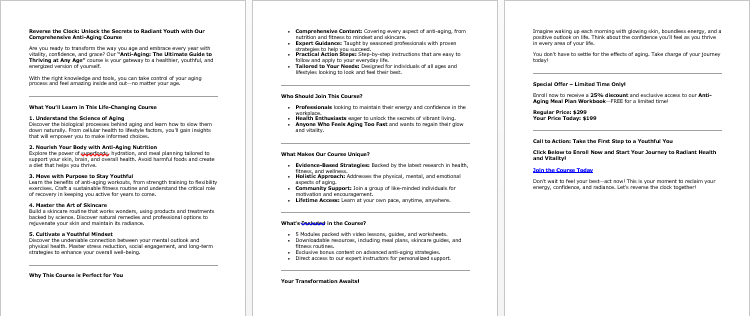
Package Details:
Word Count: 25 501 Words
Number of Pages: 100
Anti Aging – Bonus Content
Checklist
Word Count: 446 words
FAQs
Word Count: 947 words
Salespage Content
Word Count: 596 words
Total Word Count: 27 490 Words
Your PLR License Terms
PERMISSIONS: What Can You Do With These Materials?
Sell the content basically as it is (with some minor tweaks to make it “yours”).
If you are going to claim copyright to anything created with this content, then you must substantially change at 75% of the content to distinguish yourself from other licensees.
Break up the content into small portions to sell as individual reports for $10-$20 each.
Bundle the content with other existing content to create larger products for $47-$97 each.
Setup your own membership site with the content and generate monthly residual payments!
Take the content and convert it into a multiple-week “eclass” that you charge $297-$497 to access!
Use the content to create a “physical” product that you sell for premium prices!
Convert it to audios, videos, membership site content and more.
Excerpt and / or edit portions of the content to give away for free as blog posts, reports, etc. to use as lead magnets, incentives and more!
Create your own original product from it, set it up at a site and “flip” the site for megabucks!
RESTRICTIONS: What Can’t You Do With These Materials?
To protect the value of these products, you may not pass on the rights to your customers. This means that your customers may not have PLR rights or reprint / resell rights passed on to them.
You may not pass on any kind of licensing (PLR, reprint / resell, etc.) to ANY offer created from ANY PORTION OF this content that would allow additional people to sell or give away any portion of the content contained in this package.
You may not offer 100% commission to affiliates selling your version / copy of this product. The maximum affiliate commission you may pay out for offers created that include parts of this content is 75%.
You are not permitted to give the complete materials away in their current state for free – they must be sold. They must be excerpted and / or edited to be given away, unless otherwise noted. Example: You ARE permitted to excerpt portions of content for blog posts, lead magnets, etc.
You may not add this content to any part of an existing customer order that would not require them to make an additional purchase. (IE You cannot add it to a package, membership site, etc. that customers have ALREADY paid for.)
Share Now!

